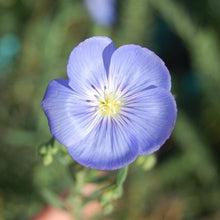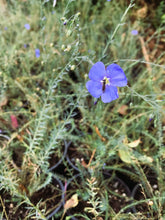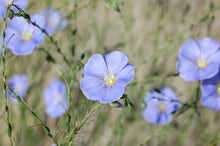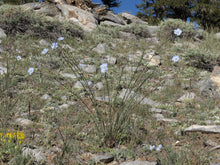
Linum lewisii
This striking wildflower has blue-green needle-like foliage on thin, dainty stems - making it an excellent filler between other perennials in sunny meadowscapes. It's plentiful sky blue flowers appear in late spring, persist all summer long and provide nectar for butterflies, bees and other insect pollinators.
- Plant type/canopy layer: deciduous, perennial, herbaceous plant
- Size at maturity: 6-24” tall, 0-1' wide
- Light requirements: full sun
- Moisture requirements: dry to moist soil, well-drained
- Bloom time: May - August
- Growth rate/ease: medium growth rate, easy to grow
- Wildlife support: flowers attract and provide nectar for adult butterflies, bees and other insect pollinators; overall plant is a caterpillar host plant and larval food source for native butterflies and moths
- Native habitat/range: locally common in shrub-steppe, subalpine, open slopes, mountain meadows and east-side forests across the Pacific Northwest between 450-2750m. Portland Plant List - no.
- Special features & uses: landscape uses include pollinator gardens, meadowscapes, and excellent erosion control; several plants in this genus, usually Linum usitatissimum, have been cultivated traditionally and continue to be cultivated commercially for their flax seeds and for the fibrous stems, which is used to make cords, linen, linseed oil
Gardening with Wild Blue Flax: This attractive prairie perennial can endure harsh conditions like pathway edges, and exposed slopes, where it can help stabilize loose soils. It prefers full sun and dry, well-drained soils, can survive extreme summer droughts, and will thrive in your meadowscape, pollinator garden, or rock garden.
Photo Credits 1: "Linum lewisii “Blue Flax”" by FarOutFlora is licensed under CC BY 2.0
Photo Credit 2: Nikkie West, Sparrowhawk Native Plants
Photo Credit 3: "Linum lewisii, blue flax flower, Albuquerque" by skoch3 is licensed under CC BY-SA 2.0
Photo Credit 4: "blue flax, Linum lewisii var. lewisii" by Jim Morefield is licensed under CC BY-SA 2.0







